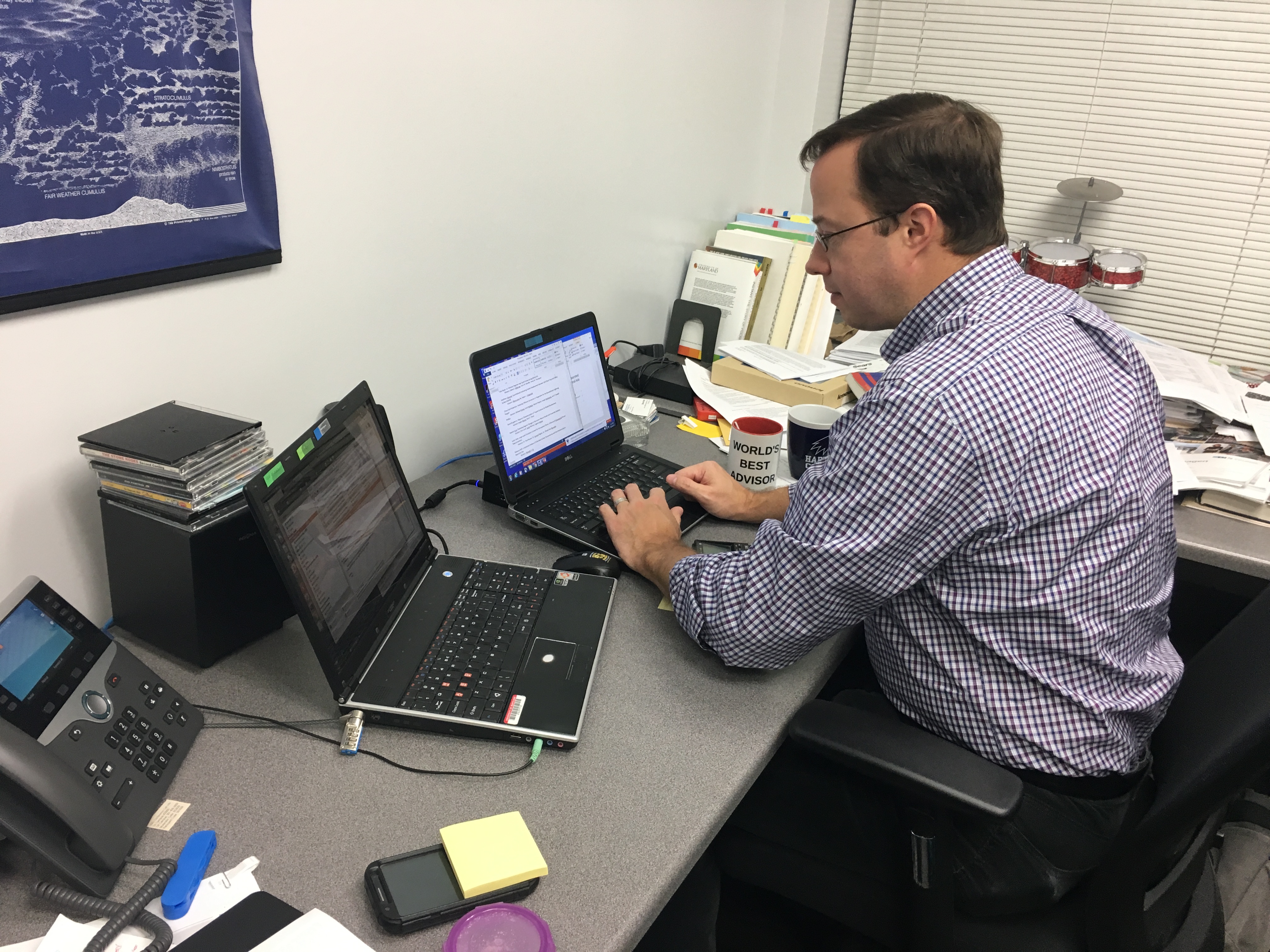By Greta Easthom
For The Diamondback
The scientific findings of two University of Maryland professors, as well as a graduate student were featured in the Climate Science Special Report.
The report, which is the first part of the Fourth National Climate Assessment, produced every four years by the U.S. Global Change Research Program, was released by the Trump administration. The report features information on “documented changes in surface, atmospheric and oceanic temperatures; melting glaciers; diminishing snow cover […] rising sea levels.”
Thirteen federal agencies reviewed the report, said Ross Salawitch, a chemistry and atmospheric and oceanic science professor. Salawitch also works in the university’s Earth System Science Interdisciplinary Center.
Salawitch, Tim Canty, director of the atmospheric oceanic science department’s undergraduate and master’s programs, along with atmospheric and oceanic science graduate student Austin Hope, researched the Earth’s rising surface temperatures, which appears in the report.
“All of the temperature change from pre-industrial to now, is mostly attributable to humans,” Hope said. “There’s lots of obviously up and down fluctuations with the other variables but … in general there’s no long-term trend in those fluctuations, so any of the total change — we can put almost all of that on humans.”
The group concluded man-made greenhouse gases, as well as various other factors, contribute to rising temperatures. Acknowledging this research is especially important given the current presidential administration, Salawitch said.
“Let’s state the obvious … we have an administration that is not doing anything proactive to reduce the nation-wide carbon footprint,” he said. “But the nation-wide carbon footprint … will continue to go down because of states, cities, municipalities.”
Salawitch also said the fifth draft was leaked to the New York Times on Aug. 7 and some researchers were worried the Trump administration would not release the findings.
Together, Canty, Salawitch and Hope developed linear-regression and energy-balance models to explain the impact four factors have on the increase of global surface temperature increases: solar components, volcanic effects, natural variability and human impacts.
“This report coming out when the administration seems very skeptical of the science is important because it does contradict some things that different levels of the administration have stated,” Canty said.
The U.S. Climate Science Special Report found the likely range of human contribution to Earth’s mean temperature from 1951 to 2010 was between .5 and 1.3 degrees Celsius.
“We take the global climate models and distill what it means for the U.S.,” Salawitch said. “The real problem is … if the U.S. doesn’t lead the way in funding the Green Climate Fund to basically help the developing world develop without making our mistakes … then the real danger is having policy like the Green Climate Fund just fizzle and fall apart.
The Green Climate Fund is part of the Paris Climate Agreement, which was signed in 2015. The U.S. was on-board under the Obama administration, but President Trump withdrew the U.S. after he took office.
Syria also joined the agreement on Tuesday, making the U.S. the only country to reject the climate accord.
Salawitch met with a congress member on Tuesday, although he said he could not disclose the name of the representative.
“My view is let’s just see what the agencies have to say and we will deal with it,” Salawitch said.



